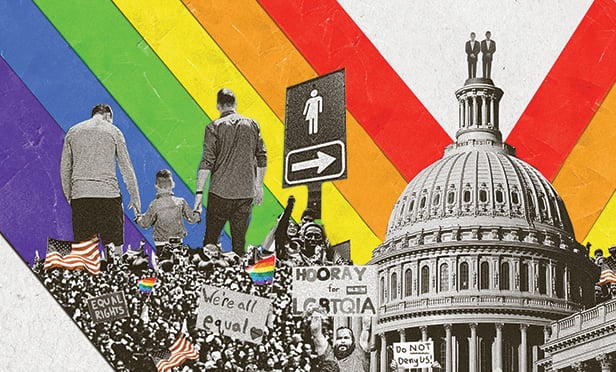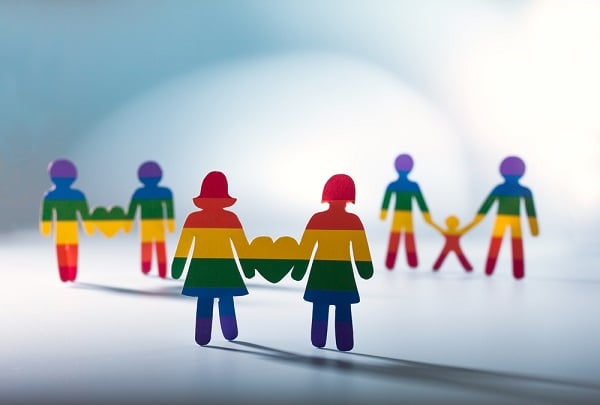 It's obviousthat company culture starts from within, which is why it'simportant to empower your existing employees. (Photo:Shutterstock)
It's obviousthat company culture starts from within, which is why it'simportant to empower your existing employees. (Photo:Shutterstock)
There's no denying that diversity and inclusion are hot topics when itcomes to the workplace, with many organizations prioritizingefforts to not only increase their pool of diverse candidates butto retain them. The term “diversity” became popular in the 1980sand has since evolved into “diversity and inclusion” with therealization that getting diverse candidates through the door isonly half the battle — inclusion efforts help to make sure theywant to stay.
|Today, many organizations have embraced the term “belonging,”which adds the final layer to diversity and inclusion efforts:acceptance. In 2018, LinkedIn released its Global Recruiting Trends report which analyzesthese three terms and measures their level of priority withinorganizations.
|Related: 10 best workplaces for diversity
|The report found that 51 percent of companies are“very” or “extremely” focused on diversity, 52 percent oninclusion and 57 percent on belonging. While diversityused to be a box that organizations checked to show progress totheir board, it has since shifted away from this. Organizationsprioritize diversity, inclusion and belonging with two main goalsin mind: improved culture which results in greater retention, andimproved company performance/bottom line. Evidently,78 percent of companies said they prioritize diversity toimprove culture and 62 percent said they do so to bolstercompany performance.
|Diversity, inclusion and belonging undoubtedly impactorganizations positively and evidence points to efforts bycompanies to diversify their workforce for various reasons. But amajor disconnect lies in the overwhelming task of implementingpolicies and procedures to accomplish such a daunting task. This iswhy it's easy for diversity and inclusion efforts to become or feeltransactional, ultimately hindering its short and long-termsuccess. To address this, look for actionable insights that bringvalue to your diversity and inclusion efforts. It's important toset realistic goals that are easy to measure. While it's temptingto make a checklist, the real impact should be found within theoverall culture of the organization, which can take time.
|Here are a few actions to help no matter where you are on yourdiversity and inclusion journey.
|Recognize and address unconscious bias
True change starts with recognition of the pervasive nature andpotential impact of unconscious bias—those deeply ingrainedstereotypes that are unintentional, yet have powerful consequences.There are many highly-regarded training programs, such as HarvardUniversity's Project Implicit, that offer a variety of approachesto help your employees identify and understand their unconsciousbias.
|One pitfall: these training programs, which ostensibly shine alight on the problem of unconscious bias, may instead make someemployees (particularly white males) defensive about their biases.Programs that reframe unconscious bias as a universal, humanchallenge with a shared opportunity to make things collectivelybetter—rather than define it as a series of divisive challenges—canset a framework that eliminates some of the inherent defensivenessthat comes from such conversations.
|Promote from within
An important step that can be taken, whether you're looking torestructure, hire a new role or fill an empty seat is to lookinternally at all of your candidates and promote from within. Infact, LinkedIn found that employees with a change in jobresponsibilities due to a promotion or lateral movement within thepast two years were much less likely to leave. As diversecandidates continue to climb the ladder, no matter what industrythey're in, they will feel that they're valued and will want tostay at the organization. It also provides mentors and leadershipfor entry-level and junior staff—who by example, will also stay ifthey feel that the promotion process is inclusive.
|Empower existing employees to champion diversity
It's obvious that company culture starts from within, which iswhy it's important to empower your existing employees. They need toknow they have a voice that is being heard from the top-down,helping to drive key initiatives throughout the organization. It'scritical to communicate progress, even small wins because itcreates a level of transparency that reinforces inclusion. Thesecommunications can be done by reaching out to younger and/or newemployees and encouraging them to champion these efforts which helpto make the topic of diversity and inclusion more prominent andaccepted throughout the organization.
|Hiring diverse candidates is essential for an organization'ssuccess in the short-term, but retaining and accepting thesediverse candidates is what will make organizations successful inthe long-term. To do this, look for actionable insights that canhelp your organization strategically reach diversity, inclusion andbelonging goals.
|David Chang is CEO of Gradifi.
|Read more:
Complete your profile to continue reading and get FREE access to BenefitsPRO, part of your ALM digital membership.
Your access to unlimited BenefitsPRO content isn’t changing.
Once you are an ALM digital member, you’ll receive:
- Critical BenefitsPRO information including cutting edge post-reform success strategies, access to educational webcasts and videos, resources from industry leaders, and informative Newsletters.
- Exclusive discounts on ALM, BenefitsPRO magazine and BenefitsPRO.com events
- Access to other award-winning ALM websites including ThinkAdvisor.com and Law.com
Already have an account? Sign In






